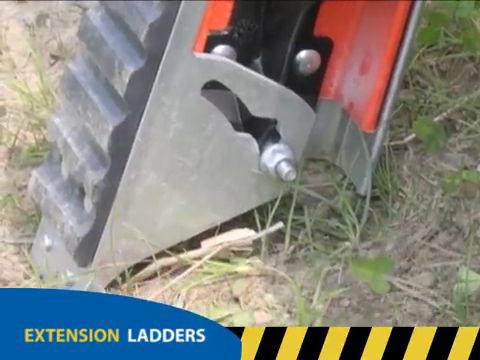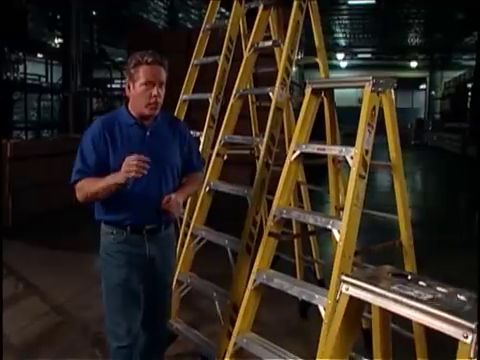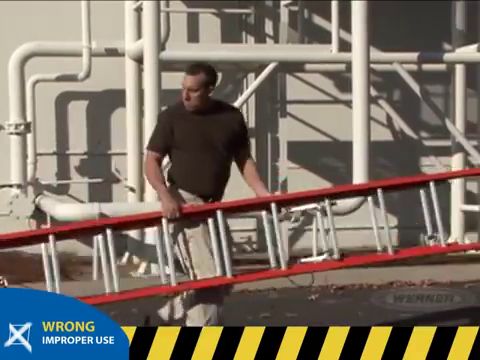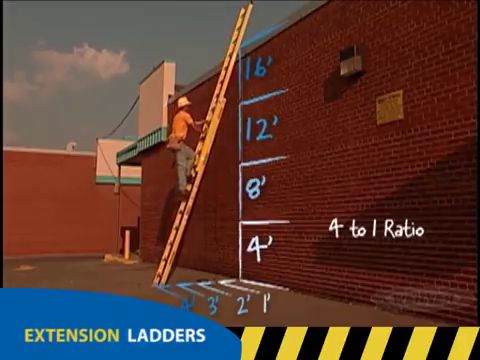Ladder Safety Guide
Posted by Howie Scarboro - CEO Fall Protection Distributors, LLC on Dec 20th 2023
Welcome to our guide on ladder safety and efficiency. Our goal is to provide information and promote a working environment for professionals like yourself. This guide will explore the topic of ladder safety aiming to educate and inform people about the steps and fundamental rules for preventing climbing-related injuries. By following these guidelines, you can enhance both the safety and efficiency of your job. According to OSHA, the number of ladder-related injuries and fatalities in the U.S. has been a significant concern. In 2020, there were 5,370 ladder injuries in the construction industry alone and 161 deaths. 81% of fall injuries are from a ladder and the estimated annual cost is $24 billion dollars. This issue can be tamped down with proper training and education.
Werner Ladders has done an excellent job at explaining the various safety procedures necessary when using ladders on the jobsite in this video.
Choosing the Right Ladder
The first and most important aspect of
ladder safety is selecting the ladder for your task. Consider factors when
making this decision, such as the nature of the job, height requirements, and
weight limitations. To make a choice, keep in mind these four considerations;
1. Ladder Style; Step ladders and
extension ladders are among the most common types available. There are a wide
range styles within these categories to maximize efficiency and ensure safety.

2. Size; The size of the ladder is just as crucial as its style. Using a ladder that's too short or too long can be potentially hazardous. Remember that your maximum reaching level should be 4 feet higher than the height of the ladder.

3. Duty Rating; The duty rating takes
into account both the weight on the ladder and the specific task at hand. It is
calculated by adding the user’s weight to any tools, clothing or materials
being used. It is important to ensure that this combined weight does not exceed
the ladder’s duty rating.
4. Material; When selecting a ladder, it is crucial to consider the ladder construction material that suits your working environment. Fiberglass ladders have gained popularity due to their durability, strength and resistance to electricity making them a preferred choice for tasks involving work. Even though they are lightweight and strong, they can not be used around electricity due to their conductivity.
Remember; Choosing the correct ladder style and size is a first step in ensuring ladder safety!
Inspecting and Handling Your Ladder
The next crucial step in maintaining ladder safety is routine inspections. Conducting checks can prevent injuries by identifying any faulty or defective equipment.
Here are a few points to keep in mind;
- Before climbing up the ladder carefully examine it for any missing loose components.
- Ensure that the ladder is in good condition and free from spills, drips or other debris.
- The labels on your ladder should be legible and securely attached.
If any issues are discovered during inspection, promptly label the ladder as out of service. Discontinue it’s use immediately. It's important to keep in mind the saying, "when you're unsure, tag it and discard it." This same principle should be applied when examining an extension ladder.
Proper Handling of Ladders

Ladders should be handled with
caution. Improper transportation or mishandling can result in damage. When
moving ladders, it's crucial to be careful and avoid dropping them or dragging
them across the ground.
Note; Never climb a ladder that is damaged and if you have any doubts it’s better to replace it!
Remember to clean up spills or drips
and make sure there are no substances on the ladder. Protect it from heat,
weather conditions and corrosive materials. Additionally store ladders with
support. Avoid placing any additional items on top.
Safety Guidelines for
Climbing
When climbing a ladder, always face it
directly. Maintain a grip, climb slowly and carefully without making sideways movements.
Take into consideration the tools you'll need for your task and plan
accordingly. Avoid overreaching as it can lead to losing balance or tipping the
ladder over resulting in injuries. Always keep your body centered on the
ladder. Move closer to your work area if necessary.
After accessing the roof area from the ladder, it is imperative to follow all OSHA safety guidelines regarding fall protection plans and equipment. A competent person should draft safety plans for each project and is responsible for training and equipping the crew with the best possible fall protection equipment.
Using Different Types of
Ladders
There are types of ladders designed
for purposes.
Different types of ladders such as
step ladders, twin ladders, platform ladders and extension ladders each have
their purposes and guidelines for usage. It is important to keep in mind that
when using a stepladder, the highest safe standing level should be two steps
down from the top.
Here are some safety tips to consider when working with an extension ladder;
- Make sure that the ladder you choose is long enough to reach your work area and ensure your safety.
- When securing an extension ladder on a roof, use tie offs or gutter clamps to minimize movement and enhance user safety.
- Always maintain a 4;1 ratio between the height of the ladder and it’s distance from the building. An angle that is too shallow or too steep can make it unstable.
- Never try to move or reposition the ladder while standing on it.

Regardless of the project or height involved, prioritizing safety is crucial. This comprehensive guide covers everything from selecting the ladder to following safety tips in order to ensure an efficient job.
Remember these three simple steps; Choosing the ladder, Use it correctly, Perform inspections.
By following these steps, you can greatly reduce climbing related injuries and have a safe climbing experience. Whether you're an individual looking to tackle projects at home or a worker reaching great heights, always remember to "think before you climb." Take advantage of the technology and tools to ensure your job is both safe and efficient. Keep in mind; Taking the time to carefully select inspect and use a ladder is invaluable when it comes to ensuring your well-being.

